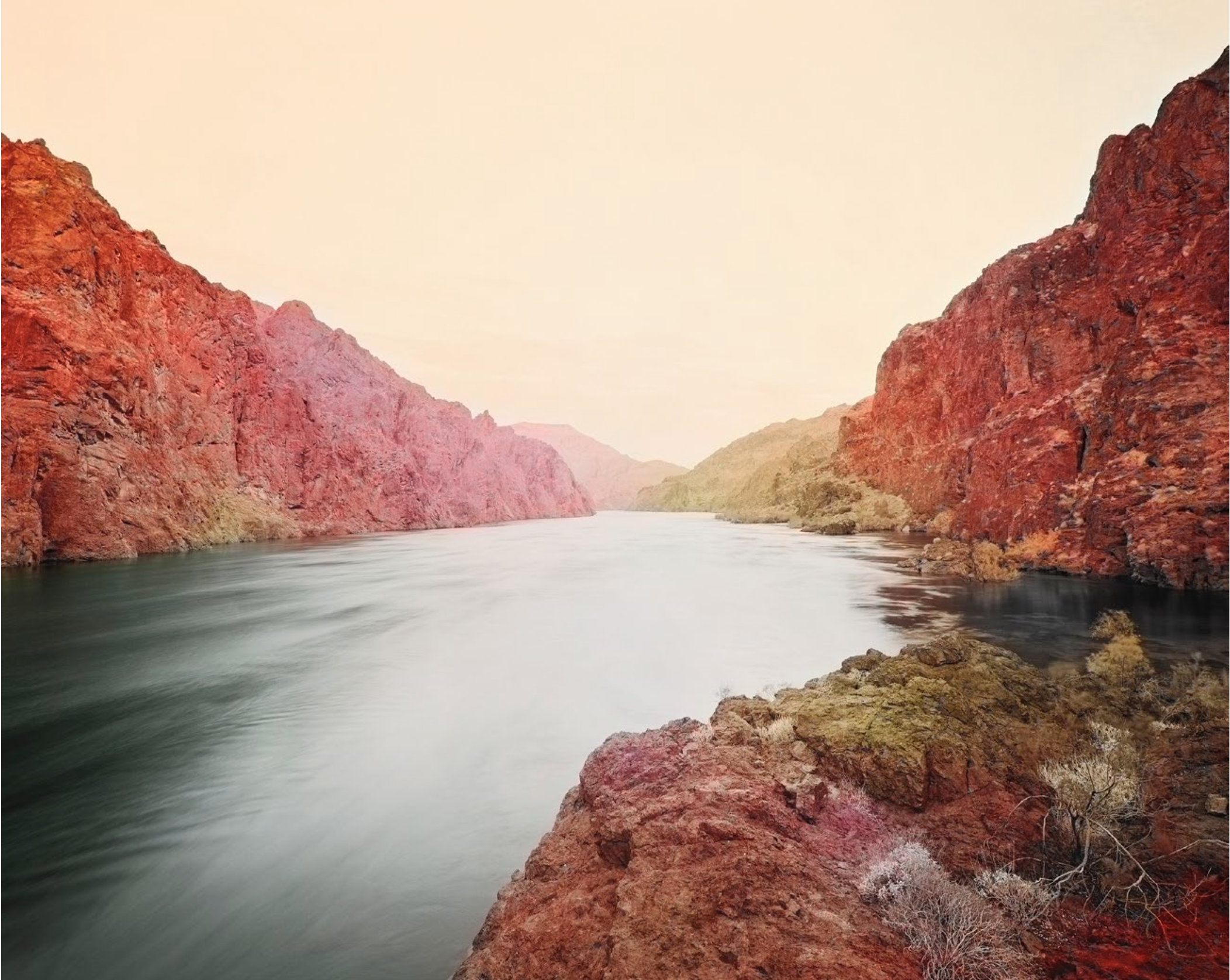Flag (Thames) 2016
2016 - Film & Video (Film & Video)
John Gerrard
Flag (Thames) 2016 depicts a small section of the Thames River—one that is adjacent to the Palace of Westminster in London—as an algorithmic representation on an LED panel. The river color is vividly represented with reflections of buildings along the riverbank, including Big Ben. At the center of the scene sits a simulated gasoline spill. The depiction accurately refracts the light and creates a vivid prismatic patch, endlessly shifting in shape over time and appearing in direct relation to the precise time of day in London. The point-of-view of the camera in the work circles this changing shape, as Flag (Thames) unfolds over a 365-day solar cycle of night and day. The soft undulation of the waves animates the scene and gives rise to the title of the work. The power of Flag (Thames) lies in its simplicity. It embodies all of the strengths of his larger work, but its technical and conceptual complexity are manageable. (The oil spill alludes to the artist’s longstanding interest in addressing the perniciousness of the oil industry.) His work can be described as existing in post-cinematic, non-linear time, sequences produced and discarded in the time it takes the computer to execute the complex codes in which they are written. His work both transcends and immortalizes their subjects.
For more than two decades, John Gerrard has produced media work that has harnessed the emergent technologies of programming languages and gaming engines, and transmuted them into landscapes and portraits of ever increasing intricacy and autonomy. Gerrard works with a small team and creates complex algorithmic generators of simulated images. His projects exist as pieces of software. That piece of software needs a powerful machine, such as a gaming-type of machine. While some of his work are manifested as a projection, others exist as an object, or as an LED wall. The only place his art cannot exist is online, because his scenes are too dense and too complex to function in that space at present. Born 1974 in Ireland, John Gerrard received a degree in sculpture from the Ruskin School at the University of Oxford in 1997. He went on to pursue graduate studies at the School of the Art Institute of Chicago and at Trinity College, Dublin. He has spent twenty years going beyond the artificial look of 3D animation, beyond what Hito Steyerl and Ed Atkins leave as recognizable. Instead, Gerrard’s work speaks to the present as well as to the histories of photography, and even to the histories of cinema.
Colors:
Related artist(s) to: John Gerrard » Andy Cushman, » Media Contact, » Pierre Huyghe, » Sculpture Garden, » Trevor Paglen, » Adam Kleinman, » Blue Medium, » Defne Ayas, » Donald Judd, » Ernst Hilger

© » KADIST
Trevor Paglen
2017Trevor Paglen’s ongoing research focuses on artificial intelligence and machine vision, i.e...

© » KADIST
Trevor Paglen
2020Half Dome Hough Transform by Trevor Paglen merges traditional American landscape photography (sometimes referred as ‘frontier photography’ for sites located in the American West) with artificial intelligence and other technological advances such as computer vision...

© » KADIST
Trevor Paglen
2020The Black Canyon Deep Semantic Image Segments by Trevor Paglen merges traditional American landscape photography (sometimes referred as ‘frontier photography’ for sites located in the American West) with artificial intelligence and other technological advances such as computer vision...

